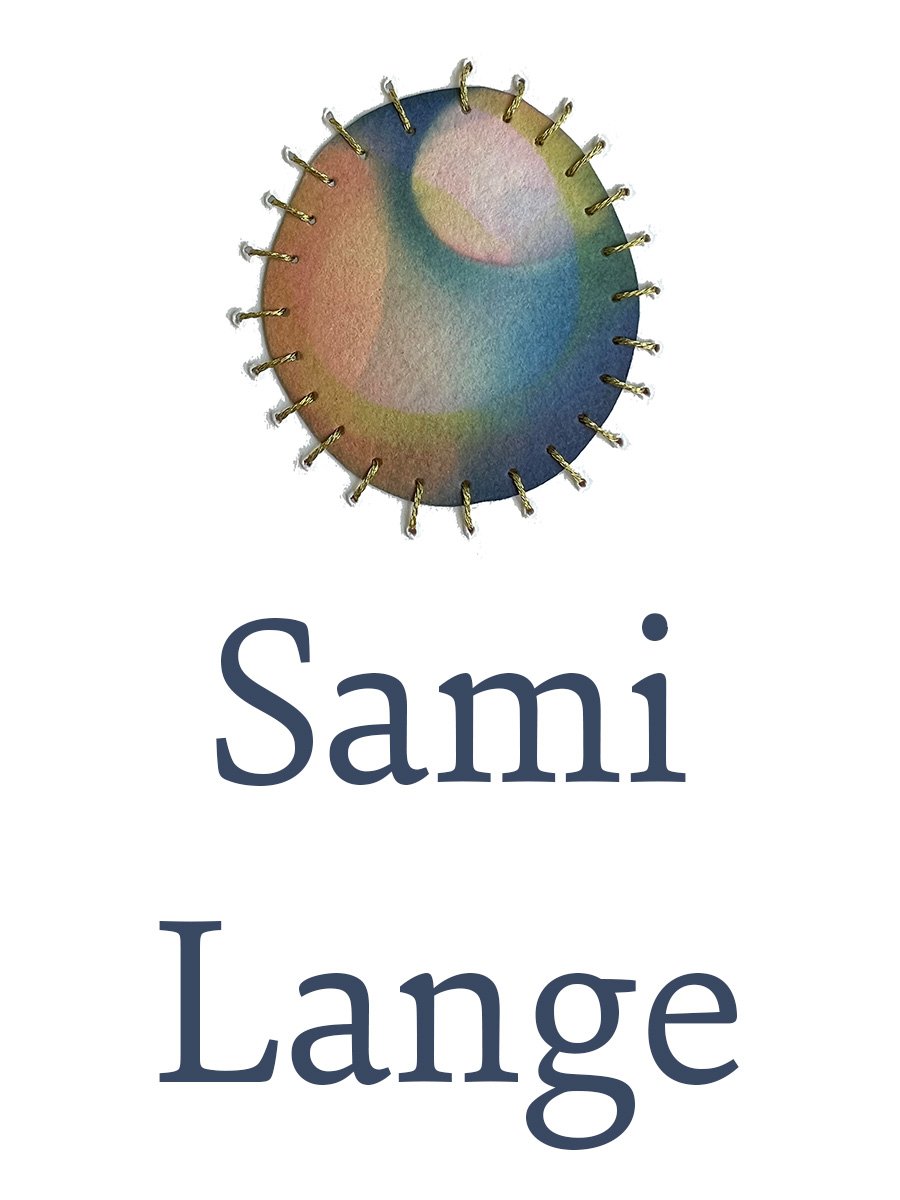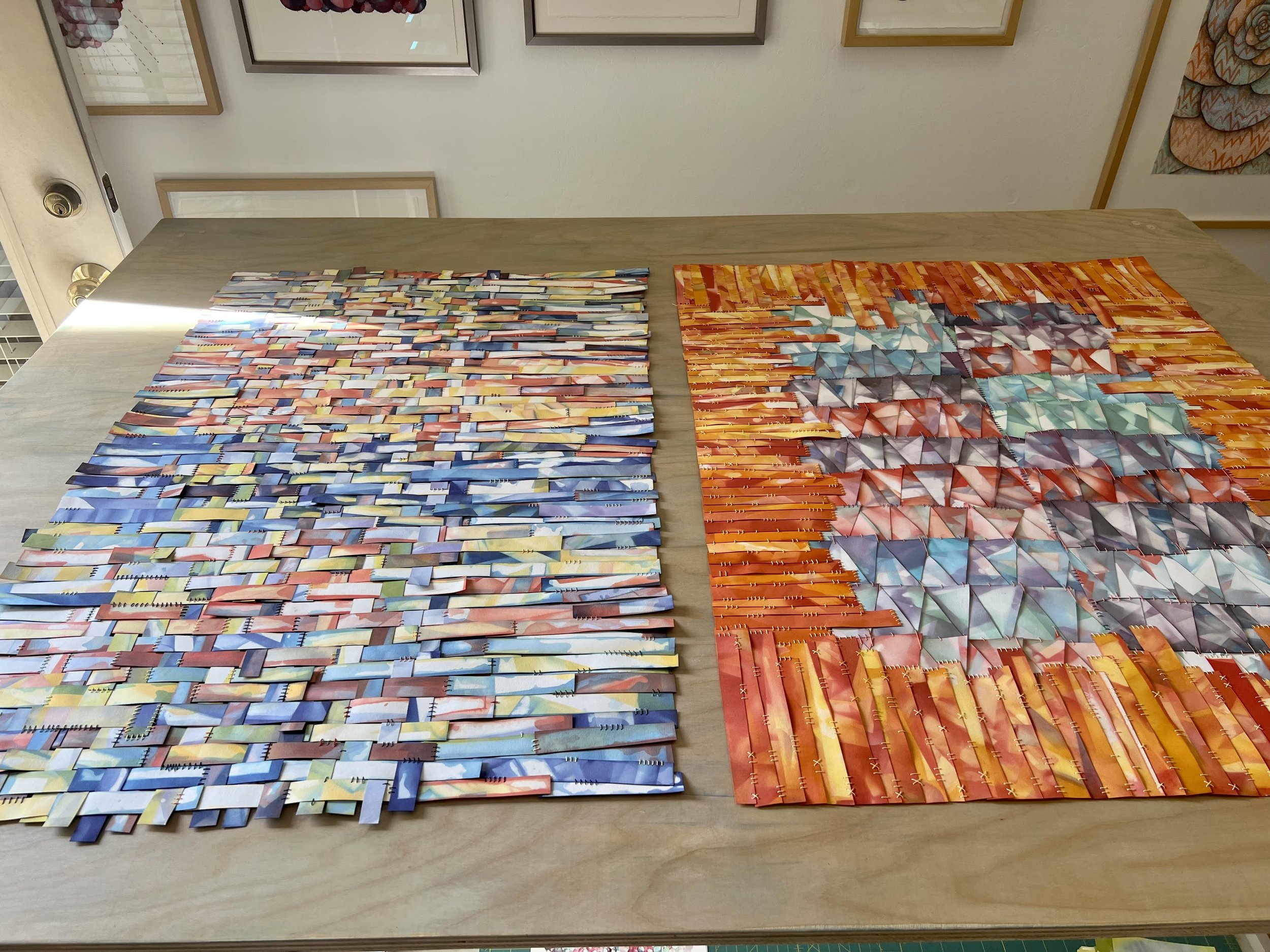How running out of laundry changed my art practice…
*Please note some of the below links may be an affiliate link, and I may earn commission from a qualifying purchase using those links.
As I stood in front of a college-level English class, I discussed adjusting keywords within a literary database for a pending assignment. I was privately thinking about the swimsuit I was wearing under my Calvin Klein blue linen dress. The bikini didn't fit because of my pregnancy weight gain and rolled down a little under my dress but no one could tell.
I had two kids at home under 20 months including one I was still full-time nursing. I had just returned to my academic librarian job at a college and was in year three of a tenure process and trying to get back into teaching mode before my tenure evaluations started the following week. It was the second time I had worn my bikini to work since returning to work the week before. It was my emergency. Every time we ran out of clean laundry, I would wear the “last resort bikini”. It was my "time to do laundry" indicator. When I was outwardly discussing search limiters, I was privately determining the time involved in a Target “second backup” bikini run after work. I was panicking that I didn't have time to wash and dry a load of laundry because of a late class. Surely a Target run would be more efficient. At that moment, I realized I had lost control of my schedule. I needed to cut out, streamline, and reprioritize my life over the next few years to make it through tenure and early years of my kids and sleepless nights. I knew that artwork fed my life in a positive and necessary way. I knew if I didn’t streamline something, sanity and studio time would be a real challenge.
Daily desert walks have become part of the margin I found in this journey.
I dove headfirst into productivity books, reading blogs, completing time experiments, and began talking about it with friends and colleagues. Over and over. I earned a reputation at work for doing productivity tests (and asking my patient colleagues to join me). I was asked to do a department-wide training on strategies I used for over thirty colleagues. I streamlined laundry, clothing, shopping, and our home contents. I started saying no to things that weren't of value. I started assessing what I was doing with my day, time, and emotions. I started looking at my life as a system when I could. I needed to change my actions to focus on what I cared about. I needed to figure out how to do that. I dove into financial literacy, minimalism, and meditation. Everything I read moved me closer to the balance point. I changed my artwork, my habits, and my expectations. Still closer. I earned tenure, gave up tenure, moved my family to another state, started a new tenure-track job, started a doctoral program, and developed immensely in my art-making. The fundamental shift was realizing where my time was going instead of my perception. Laundry took minimal time, but I mentally blew it way out of proportion. In fact, I blew many things out of proportion. I had no idea how and what I was spending my time on. So many items seemed to take more or less time than they did. I have done so much growth in my doctoral program about boundaries and time perception.
This post is the first part in a series where I share the learning moments, resources, and strategies I used to take back much of my time and energy since my bikini-wearing work days. I wasn't interested in moving upwards with a career in education or exclusively focusing on a huge art career shift; I am looking to enjoy my work and family and find energy and fulfillment in my life and work. Having margin and free time has been a key focus. While I have had to work hard to earn tenure (again in my third year of tenure in a new position), I also wanted to slow down and focus on passion projects. I dove heavily into research in my education field and worked hard to stop comparing myself to other artists and makers. There will ALWAYS be someone who makes artwork I want to make - but the margin I give myself now allows me to embrace and enjoy what I make and experience. Whether art is a hobby or a lifestyle or done solely to earn an income, you can take a lot away from productivity materials and systems discussions.
The additional focus time allowed me to scale up my paper quilts by systematic skill building in the studio.
Here are a few essential resources that supported my initial entry into productivity and systems thinking for my artwork (and life).
Atomic Habits by James Clear. If you haven't read this title, it's worth owning your own copy. Essential takeaways include how micro changes we make add up over the long run and tangible graphs that show significant shifts from tiny changes (this always sells me). The "laws" of building new habits in four steps are outlined, showing the process of making new habits by making them obvious, attractive, easy, and satisfying. I also receive (and actually read) his 3-2-1 newsletter, which provides quick and insightful quotes and ideas.
Laura Vanderkam: I first found Laura from her humorous TED talk and individuals' ideas about "saving" time (like only making right turns). I read her newsletters which provide practical reframes for looking at our time and encouraging ideas about a long-term commitment to small details. She unpacks how others, including mothers and successful professionals, manage their time and what strategies they use. Her writing is enjoyable and doesn't feel like that standard "time use" productivity content with an approach that is more about awareness and the long view. She wrote I Know How She Does It and Tranquility by Tuesday: 9 Ways to Calm the Chaos and Make Time for What Matters.
Decide: Work Smarter, Reduce Your Stress, and Lead by Example by Steve McClatchy: I consider this one an oldy but a goody. There is a heavy focus on leadership and skill development in the book, but also the takeaway of defining tasks into those that 'prevent pain' and those that 'increase gain.' Preventing pain activities might be responding to an email or cleaning the studio. Gain activities might apply to the public art project you want, even though it's time-consuming. It also means taking a week off social media and making zero reels or posts to finish a piece you need quiet thinking time and space on. Identifying what tasks relate to which category helps me target my studio time on days when it's limited. Do I HAVE to respond to this email or send one, or can I work on this project I want to because otherwise, it wouldn't move forward?
These are just a few of the books and ideas I appreciate from some key authors. What strategies do you use in the seasons when everything is packed and studio time is pressured?



